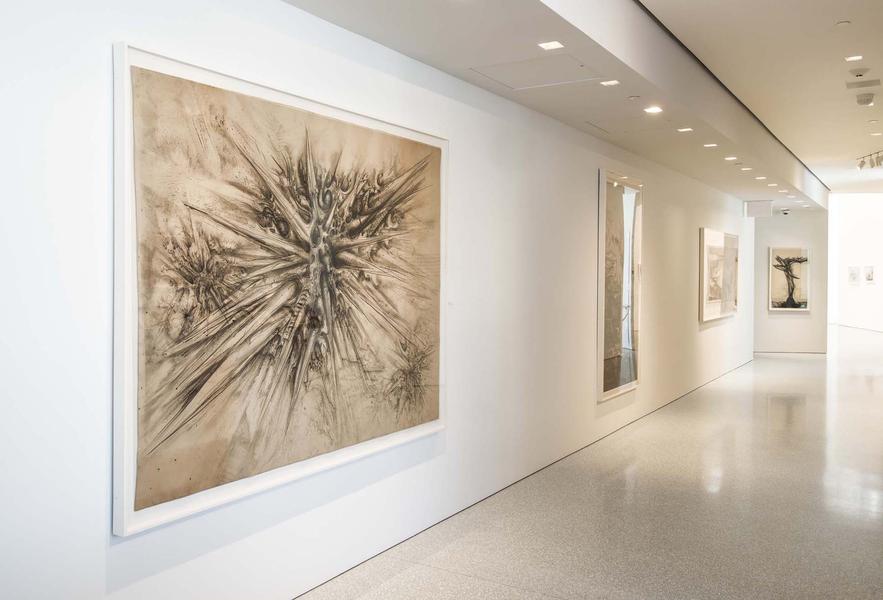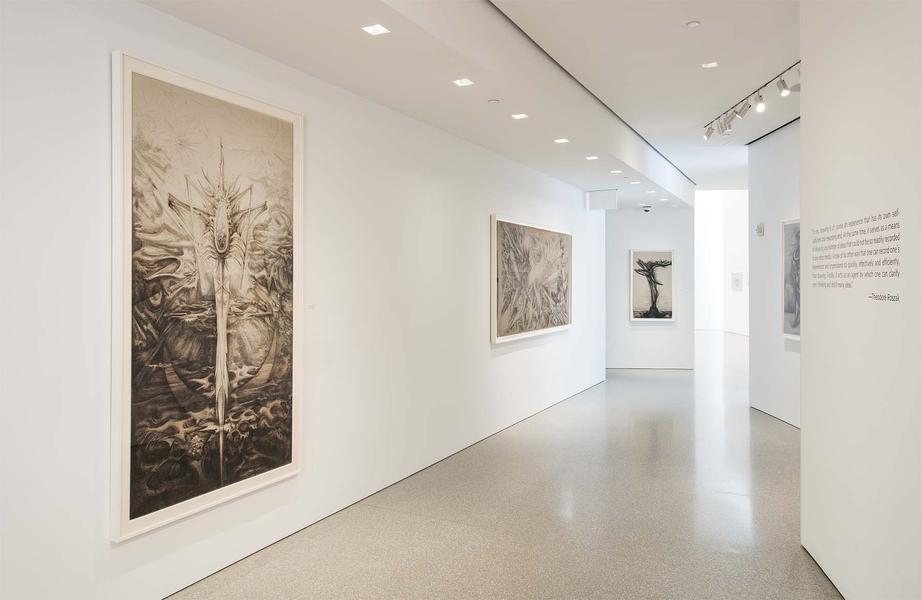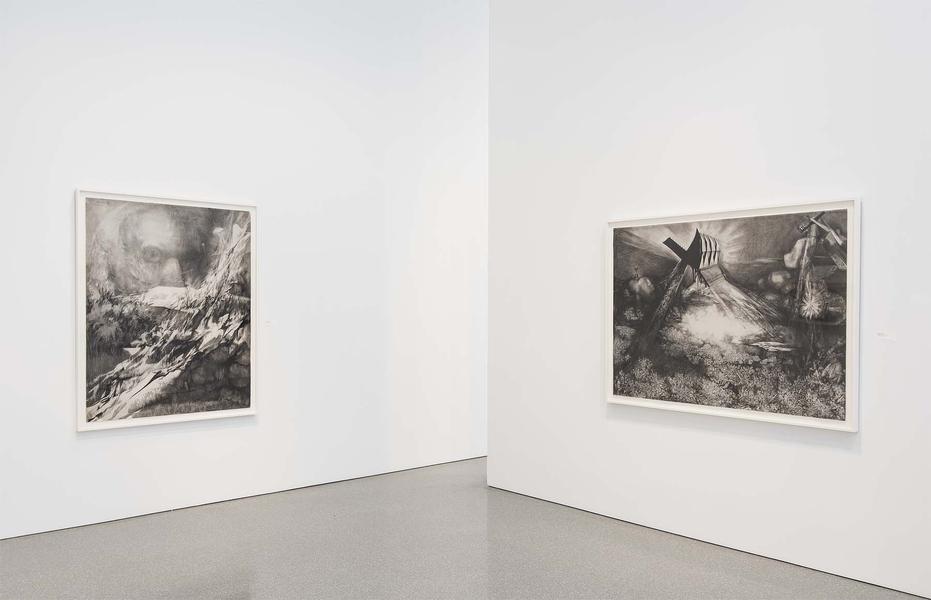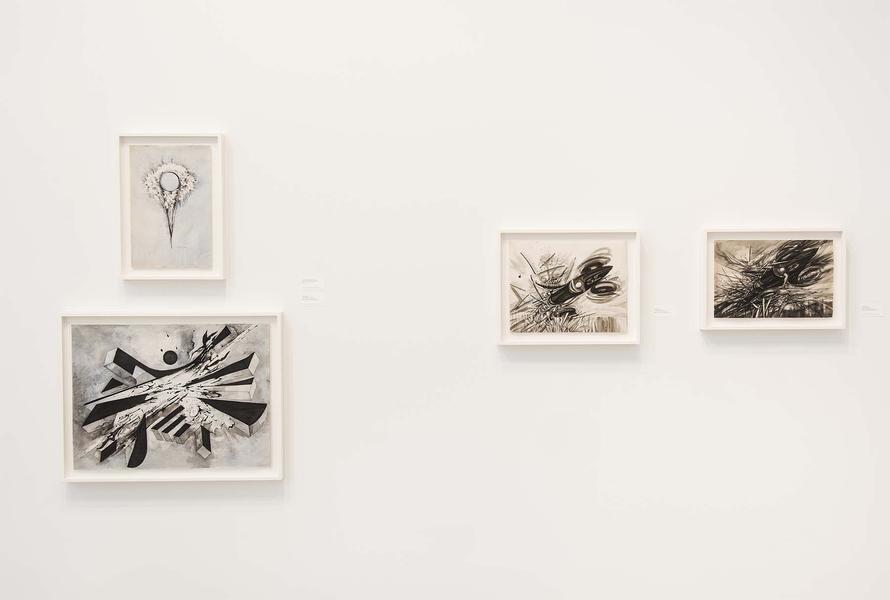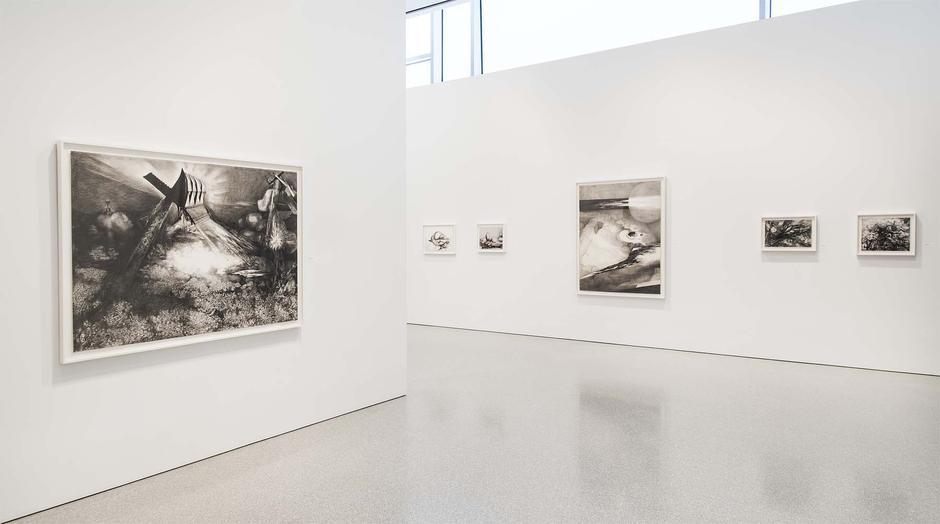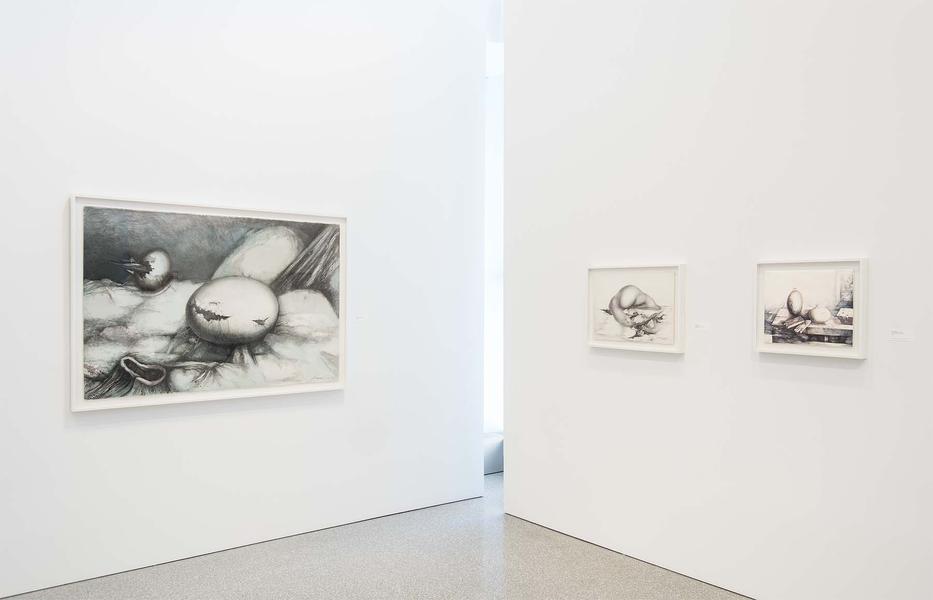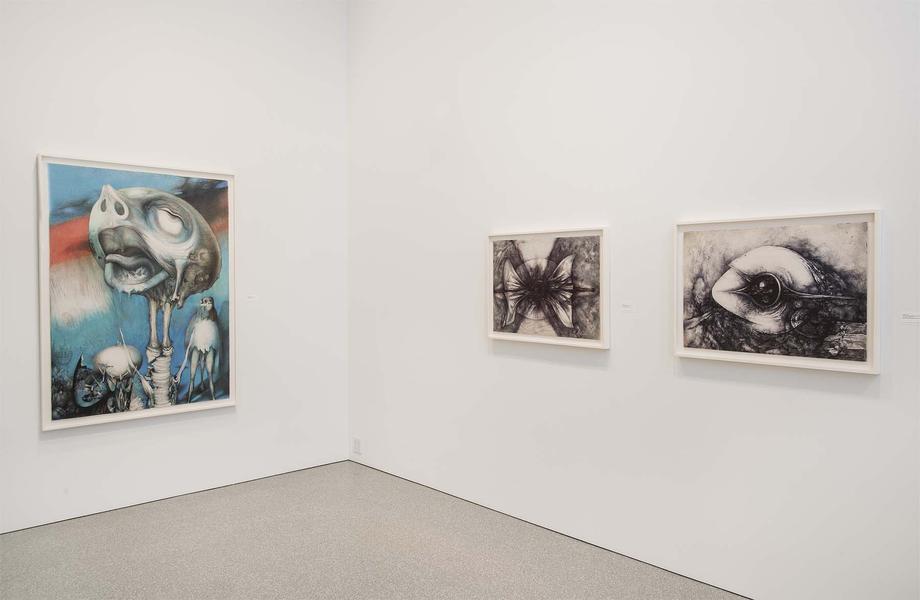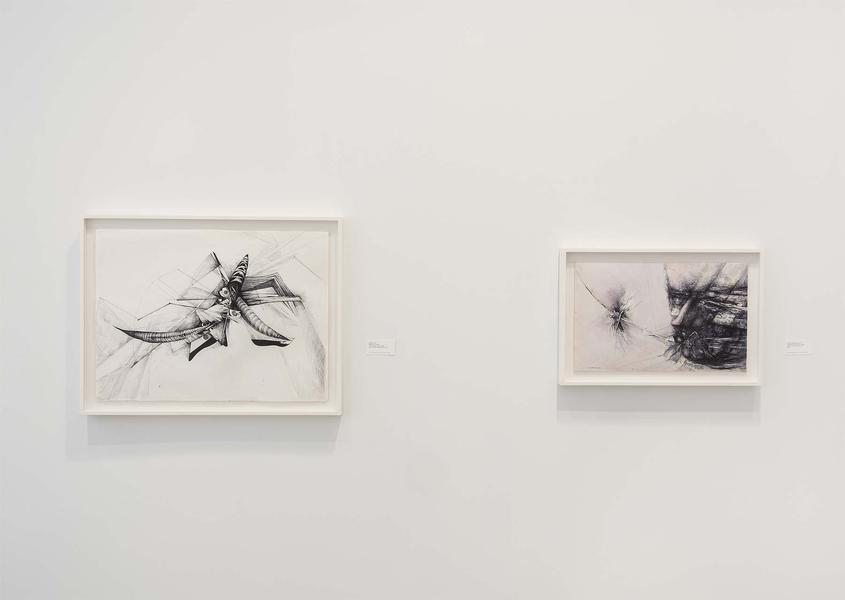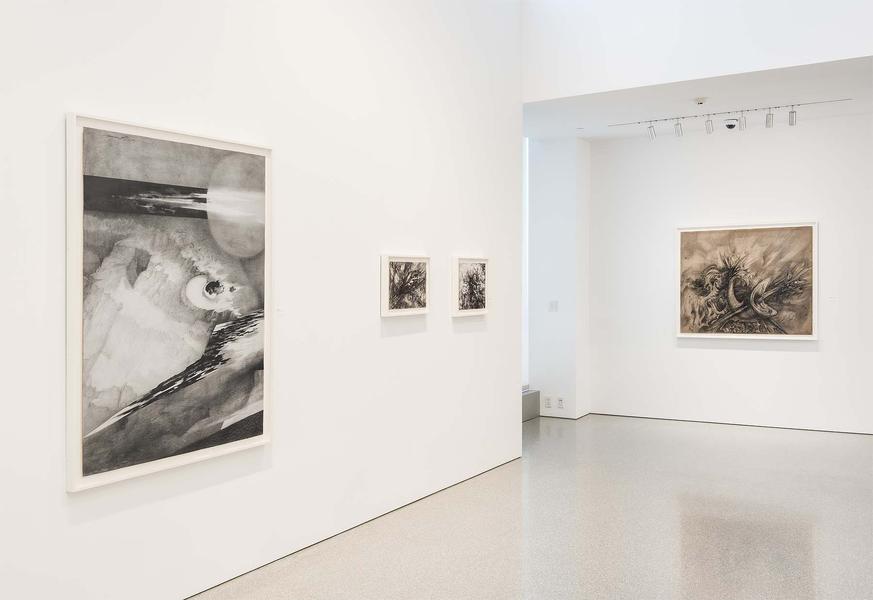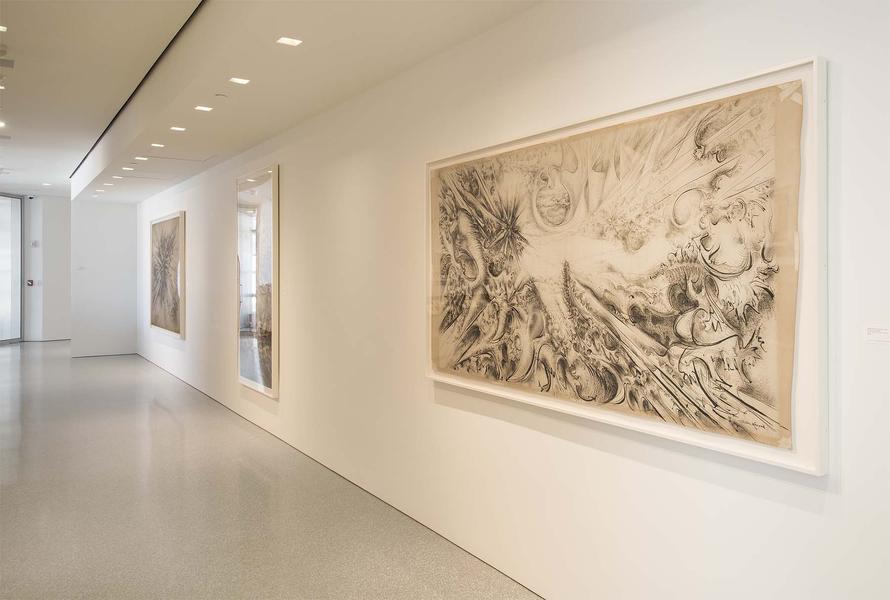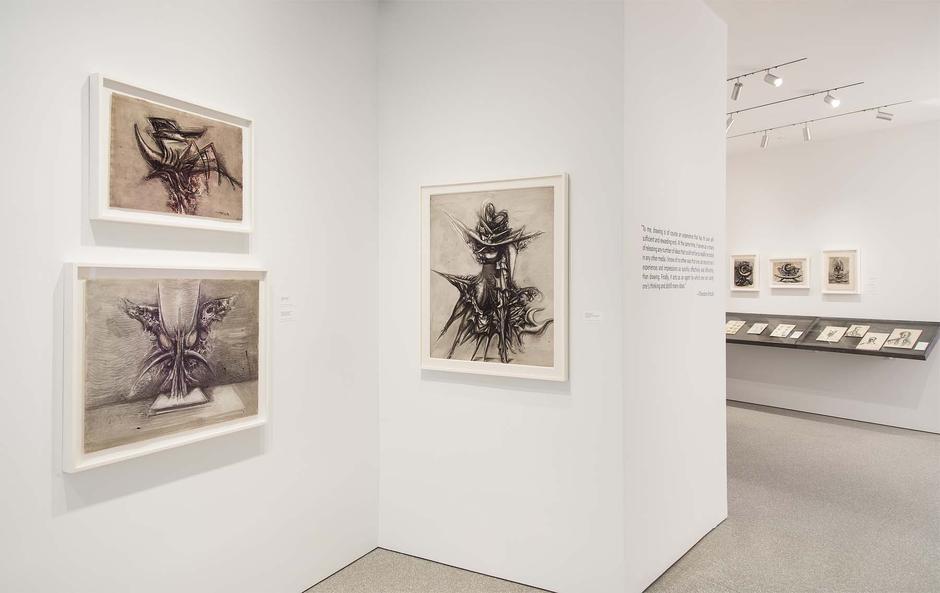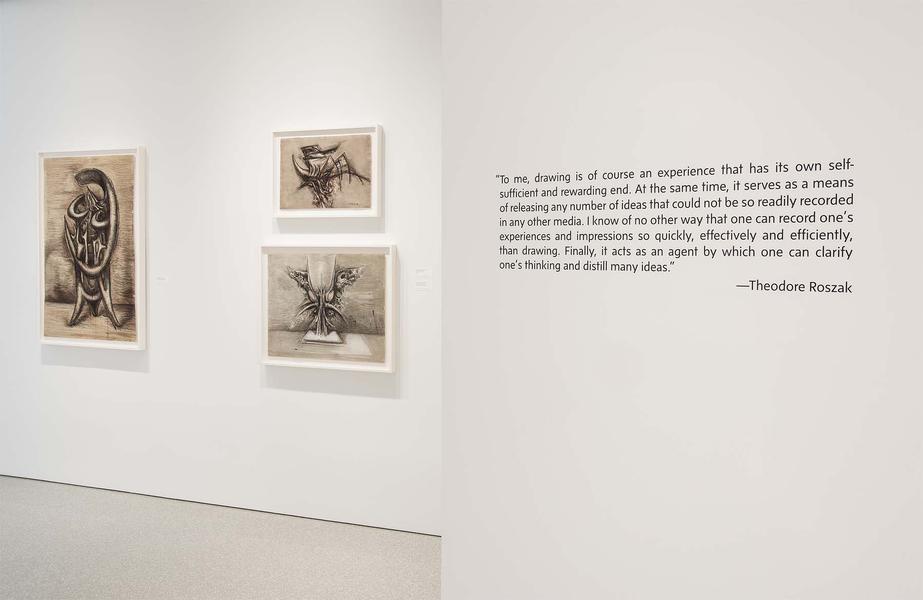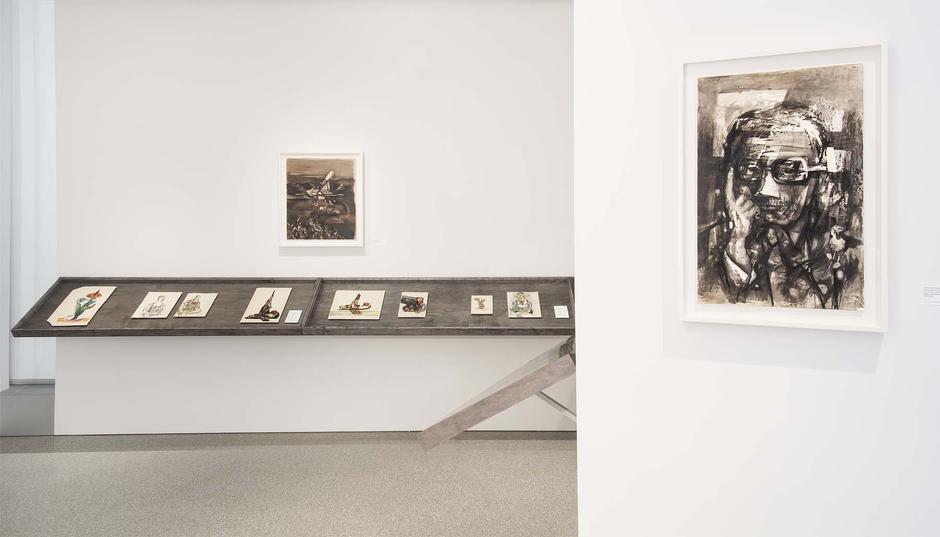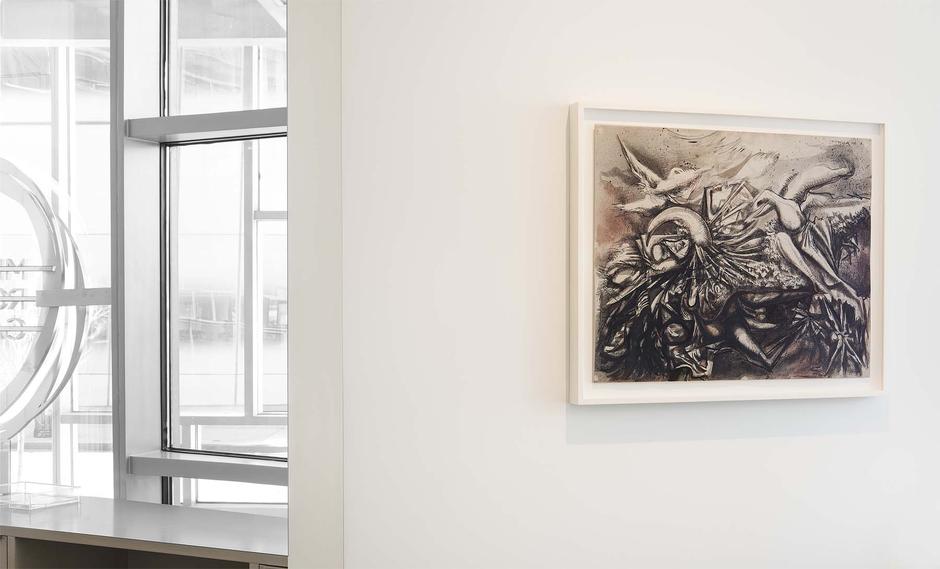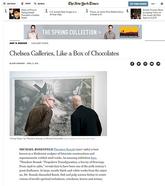Preview Event
Thursday, March 24
5:00-6:00 PM: A Conversation with the artist’s daughter Sara Roszak and Robert Slifkin, Associate Professor at the Institute of Fine Arts, New York University
Reception to follow 6:00-8:00 PM
The video presentation is now edited and ready to view in its entirety HERE
“Every beginning requires of me a new orientation, since at this point little is actually known and less is formally categorized—yet within this amorphous area of emotional experience, one’s perceptions and sensibilities stir anew and make unknown alliances, revealing their visual counterpart in varying forms of concealment and disguise.”
—Theodore Roszak, 1963
The “self-propulsive” medium of drawing would be the principle means for Roszak’s exploration of the transfiguration of the world, a world that he recognized as ceaselessly being in a state of flux as it responds to the changing requirements of an equally mutable human nature.
—Robert Slifkin, 2016
(New York—March 15, 2016) Michael Rosenfeld Gallery is pleased to present Theodore Roszak: Propulsive Transfiguration, A Survey of Drawings from 1928 to 1980, an exhibition of approximately sixty energetic drawings spanning the artist’s career and curated in close consultation with the artist’s daughter Sara Roszak and his estate. The exhibition is accompanied by a fully illustrated color catalogue and an original essay by Robert Slifkin, Associate Professor of Fine Arts at NYU’s Institute of Fine Arts. This exhibition offers a rare and comprehensive look into the creative process of a celebrated American artist more commonly known for his monumental welded sculptures. Prior to this exhibition, the last and only other survey of Theodore Roszak’s drawings was curated in 1992 by Paul Cummings for The Drawing Society in New York City.
Highlighting Roszak’s multidimensional talent, the drawings presented in Theodore Roszak: Propulsive Transfiguration reveal his capacious intellect and expansive range of interests. The title of the exhibition alludes to Roszak’s fascination with the dynamics of metamorphosis—the transformative energies of the natural, organic world as well as the potential of technology and industry to alter the world, for better and for worse. A voracious consumer of ideas, Roszak found inspiration for his prolific body of work in a variety of sources. These included: the design and engineering innovation of streamlining that Norman Bel Geddes addressed in Horizons; the psychoanalytic theories of Sigmund Freud, Carl Jung, and Otto Rank; French purism; atomic energy; aeronautics and space exploration; and the art and culture of India.
This eclecticism strengthened his art and was mirrored in the particular way that Roszak understood the relationship between drawing and sculpture. As Robert Slifkin notes in his essay written for the exhibition catalogue: “while Roszak certainly identified himself first and foremost as a sculptor, coming of age as an artist when such medium-specific monikers were fundamental to aesthetic practices, he consistently produced finished drawings . . . that cannot be considered ancillary to any specific sculpture. . . A relentlessly productive artist, Roszak invested all of his creative practice with equal vigor and intensity. As a medium traditionally associated with imaginative exploration and translation, drawing occupied a privileged position within Roszak’s investigation of creation in both its natural and artificial registers.”
Michael Rosenfeld Gallery has long been a champion of Theodore Roszak’s work. In addition to a 2008 solo exhibition, the gallery has featured his work in several major group exhibitions, including: Aspects of American Abstraction, 1930-1942 (1993), Defining the Edge: Early American Abstraction, Selections from the Collection of Dr. Peter B. Fischer (1998), Organic New York, 1941-1949 (2005), and two major surveys of abstract expressionism and surrealism, in 2009 and 2010, respectively. In cooperation with Jeffrey Hoffeld Fine Art in New York, Michael Rosenfeld Gallery represents the Estate of Theodore Roszak.


